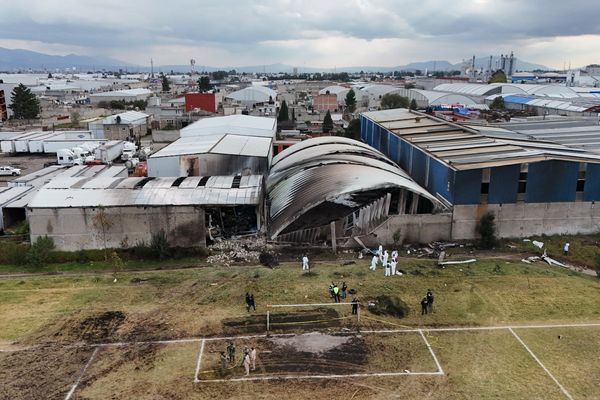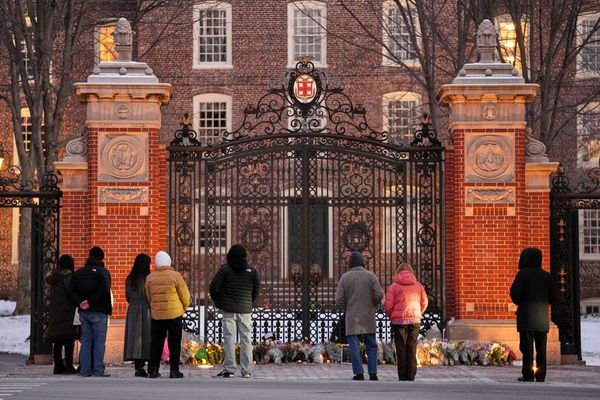ST. LOUIS — While the COVID-19 pandemic is the primary public health crisis, overdose deaths continue to ravage society in increasing numbers with sharp disagreements about how to address the problem.
“The mortality is substantial,” said St. Louis Medical Examiner Michael Graham, whose office has so far confirmed nearly 900 accidental fatal overdoses in the city since Jan. 1, 2020 — about 200 more deaths than caused by COVID-19.
St. Louis County, by contrast, has recorded about 700 overdose deaths during the same period, compared with more than 2,800 due to COVID-19.
The overdose trend has been rising here and other places so long that collective alarm from the death toll seemed to have silenced. Then, in late 2021, a new summit was reached, drawing a barrage of headlines and analysis to come and go:
Estimated overdose deaths eclipsed 100,000 for the first time nationwide in a 12-month period, doubling the number of lives lost five years prior. Opioids, particularly synthetic fentanyl, caused 75% percent of the deaths, according to the U.S. Centers for Disease Control and Prevention.
Ambulances are often scrambling to revive people with naloxone, commonly called Narcan. While many have died in the streets, more are pronounced dead out of public view. Of the nearly 900 who died of fatal overdoses in the city in the past two years, about 750 were pronounced dead at home, in residences or at a hospital, records show.
Naloxone continues to be distributed in more communities, but Missouri lawmakers haven’t encouraged other “harm-reduction” programs such as safe needle exchanges to help protect people addicted to opioids from getting diseases like HIV and hepatitis C.
The opioid epidemic took off in the 1990s. By now, many families have experienced a loss or know of somebody struggling to make it. Studies have been completed. Expert summits have been held. Lawsuits have been filed and settlements announced.
And yet a well-established standard of care still has not been adopted in Missouri. People undergoing counseling-based therapy are twice as likely to die from an overdose as those on prescribed methadone or buprenorphine, but debate can heat up even among those who are supposed to know the most.
Because methadone and buprenorphine provide a controlled dosage of opioids to keep withdrawal sickness at bay, some argue that patients using the medications aren’t living drug-free lives. One drug is replacing another.
Others say there’s no use being “drug-free” if the patient isn’t stabilized and dies managing withdrawals with street fentanyl.
In November, a popular online discussion forum for Missouri bureaucrats, treatment providers, researchers and other stakeholders shut down, in part because of disagreements about medication-assisted treatments, including naltrexone. Naltrexone is the third of just three medications the FDA has approved to treat “opioid use disorder.”
“We are trying to save 100,000 people from dying,” blasted one writer, asking participants to check their egos at the door.
Look at the data, wrote another.
Nora Bock, a division director at the Missouri Department of Mental Health, which funds treatment providers that contract with the state, ultimately weighed in.
“We will only weaken ourselves and our ability to help others if we isolate ourselves from public discourse and recess into camps of people that think exactly like us,” Bock wrote. “There is enough of that already. This is a group rich with knowledge. … I hope it maintains a robust following.”
Agendas
The discussion group is back online, but some hesitate to weigh in. People like Percy Menzies sound wounded.
“They all have an agenda,” Menzies, president of Assisted Recovery Centers of America, which has drug treatment clinics in the St. Louis area, said in a recent interview.
Meanwhile, he said, there is an “absence of consumer advocacy.” Unlike the AIDS crisis, which had HIV-positive activists like Larry Kramer pulling stunts to spur the development of numerous medicines, Menzies said, people addicted to opioids are often left stigmatized, without a unified voice in the fight.
Sometimes the pressure comes from the top.
In addition to his efforts to ensure Missouri would be the last state to create a prescription drug monitoring program, or PDMP, a database to identify the overprescription of addictive opioid painkillers, state Sen. Rob Schaaf, R-St. Joseph, said in 2012: “If they overdose and kill themselves, it just removes them from the gene pool.”
Schaaf, a physician, who previously served in the House, is no longer a senator. Last week, he declined to be interviewed but said by text that the comment in question was made late at night, after hours of tiring debate, and taken out of context.
“Of course having anyone die of a drug overdose is tragic,” he texted. “It’s also tragic that our freedom has been abridged by the PDMP, which has been shown to be ineffective.”
Sen. Holly Rehder, R-Sikeston, who sponsored the PDMP bill that passed last year, said in an interview last week that the statewide program hasn’t yet been launched. She said the freedom argument is “absolutely ridiculous.”
“We’ve had electronic medical records for years,” she said. “This is not different.”
In the current legislative session, Rehder has again filed a syringe exchange bill. She said she’s been trying to get the same bill passed since Chad Sabora, of the Missouri Network for Opiate Reform and Recovery, came to her years ago for help. Initially, she said, it seemed like enabling. Then she saw research about syringe exchanges leading to successful treatment.
“When they used these syringe access programs, they found someone who met them where they are at in life,” Rehder said. “Many folks who grew up like me, they don’t have anyone in their life with knowledge about how to get help.”
She said her 35-year-old daughter wrestled with a “deep addiction” for 12 years that started with prescription pain pills. She said her daughter has been in recovery seven years.
“She’s the best mama I know,” Rehder said.
‘It takes control’
The St. Louis region has driven the opioid epidemic in Missouri for several years. In the city, which has the highest rates, fatal overdoses happen all over — in streets, hotel rooms, houses and apartments. It is common to have two or three deaths in one day. On June 3, 2020, there were seven, ages 33 to 68.
Sometimes the deaths are grouped in the same area.
Dismas House, a federal halfway house at 5025 Cote Brilliante Avenue, had five fatal overdoses since 2020, records show. Four of them died at the facility, another a few blocks away. Four people from an apartment building across the street at 1610 North Kingshighway died during the same timeframe, including one on Aug. 31, 2021, and another the next day.
Sam Carter, 38, who lives in the apartment building, said he knew two of the residents who died. He has seen the toll of the opioid epidemic on the broader community, including people nodding off or acting out of their minds near Sherman Park. A few months ago, he said, he used free Narcan to revive a man who was lying next to an auto parts store.
“I hate to see us as people go through that,” said Carter. “There should be more help.”
Carter, who grew up in north St. Louis and has family there, said he’s asked people why they risk taking opioids. He said some are on other drugs. Some are depressed.
“It takes control of them,” he said. “It becomes them. They aren’t themselves.”
While each person has their own reason for using, the Survey of Key Informants’ Patients program offers a collective voice of what many addicts are going through. The ongoing survey has confirmed changes in the opioid epidemic before they were widely accepted, such as when rural and suburban whites shifted from misusing prescription painkillers to street heroin.
Theodore Cicero, a neuropharmacologist at the Washington University School of Medicine, started the current version of the survey in 2008 by asking people to fill out a lengthy and anonymous questionnaire about themselves when they entered drug treatment. The database has since grown to include responses from more than 28,000 people across 49 states.
“Our unanimous finding is these people are desperately trying to escape their life circumstances,” Cicero said. “They are not happy with life as it currently is, or their past. Horrible things happened.”
Cicero, 79, who has been studying addiction since the late 1960s, said it’s noteworthy to point out that most people wouldn’t like opioids if they tried them. For many, he said, it’s a matter of brain chemistry and genetics.
Underlying factors
According to survey results, half of respondents who were asked — 14,156 out of 28,338 — reported being diagnosed with a psychiatric disorder, ranging from depression to schizophrenia. Nearly eight out of 10 were prescribed a benzodiazepine at some point in their lifetime, a psychoactive drug typically used to treat anxiety.
Survey results signal that past trauma and injury also are factors. About a third of people who were asked reported a history of sexual abuse; 39% said they had a history of chronic pain. About half said they took opioids to avoid or ease withdrawal pain or to escape “from current life stressors.”
Asked about the country surpassing 100,000 overdose deaths, and the St. Louis region driving the epidemic in Missouri, Cicero described a hard reality at play.
“I am afraid we are almost getting to the point where we just accept this is the way it’s going to be from now on,” he said. “We can’t do that as a society.”
Matthew Ellis, an epidemiologist who is the principal investigator of the survey, said each person addicted to opioids usually has a variety of challenges. He said treatment centers and doctors aren’t equipped to address them alone.
“Networks need to be built so patients can get all the support they need,” he said.
Graham, whose medical examiner’s office in the city recovers many of the people who don’t make it, said there have been public meetings about the opioid epidemic and other awareness efforts.
“People are interested, but obviously it’s a very complex issue,” he said. “As long as you have demand and the economics of it — that there is potentially a pretty big reward for getting involved in trafficking — it’s really going to be a tough issue.”
———







